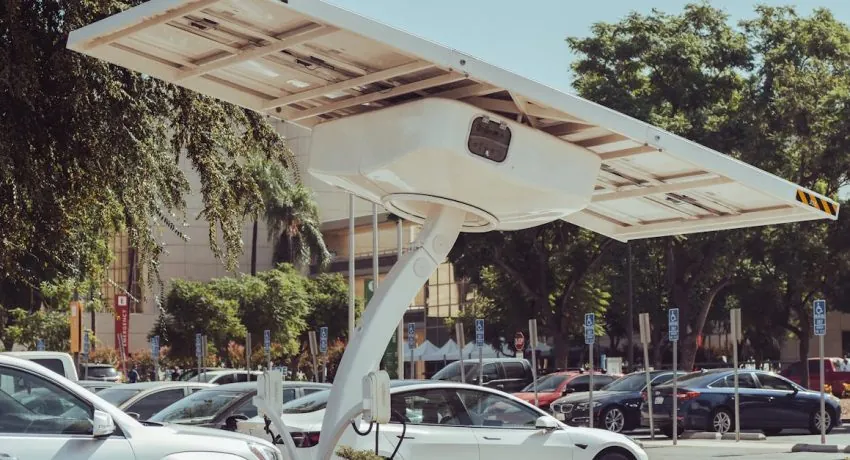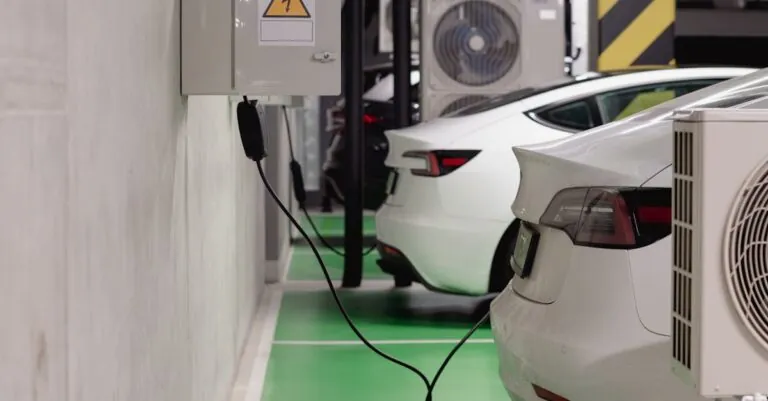Electric vehicles are zooming into the spotlight faster than you can say “zero emissions.” With the world shifting gears towards sustainability, EV cars are not just a trend; they’re the future of driving. Imagine gliding silently past gas stations while others are stuck in line, all while saving the planet. Talk about a win-win!
Table of Contents
ToggleOverview of EV Cars
Electric vehicles (EVs) represent a significant shift in the automotive industry. These cars utilize electricity as their primary energy source, offering an eco-friendlier alternative to gasoline-powered vehicles. Battery electric vehicles (BEVs) and plug-in hybrid electric vehicles (PHEVs) constitute the main categories of EVs. BEVs operate solely on electric power, while PHEVs combine an electric motor with a conventional internal combustion engine.
Numerous advantages accompany the adoption of EVs. With zero tailpipe emissions, they contribute to improved air quality and reduced greenhouse gas emissions, crucial in the fight against climate change. EVs often boast lower operating costs, as electricity tends to be cheaper than gasoline. Additionally, the maintenance requirements for electric cars are typically less demanding due to fewer moving parts in the engine.
Concerns about range anxiety persist, yet advancements in battery technology continually extend the distances EVs can travel on a single charge. Fast-charging stations are rapidly increasing in number, addressing consumer worries about accessibility. EVs also benefit from government incentives, including tax credits and rebates, encouraging more individuals to consider this alternative.
The growth of the charging infrastructure plays a vital role in the adoption of EVs. As cities and communities install more charging stations, convenience becomes a reality for drivers. Many manufacturers now offer models with varying prices and features, catering to a broader market. The future looks promising as technology continues to evolve, proving that electric vehicles are more than just a trend; they represent an essential component of modern transportation.
Types of EV Cars
Electric vehicles (EVs) come in various types, each designed to meet different consumer needs and preferences. Understanding these categories helps in choosing the right EV.
Battery Electric Vehicles (BEVs)
Battery electric vehicles (BEVs) operate solely on electricity, powered by rechargeable batteries. They produce zero tailpipe emissions, making them an environmentally friendly option. Charging methods include home stations, public charging networks, and fast-charging stations. BEVs typically offer a range between 100 to over 400 miles on a single charge, depending on the model. Popular examples include the Tesla Model 3, Nissan Leaf, and Chevrolet Bolt EV.
Plug-In Hybrid Electric Vehicles (PHEVs)
Plug-in hybrid electric vehicles (PHEVs) combine a traditional internal combustion engine with an electric motor. These vehicles can drive short distances on electric power alone, usually ranging from 20 to 50 miles. For longer trips, the gasoline engine kicks in, providing extended travel capability. Charging can occur at home or public stations, enhancing convenience. Examples of PHEVs include the Toyota Prius Prime and the Ford Escape PHEV.
Fuel Cell Electric Vehicles (FCEVs)
Fuel cell electric vehicles (FCEVs) utilize hydrogen fuel cells to generate electricity. These vehicles emit only water vapor and have a longer range compared to battery electric vehicles, typically around 300 miles. Refueling takes about 3 to 5 minutes, similar to conventional gasoline stations. However, hydrogen infrastructure remains limited, impacting availability. Examples of FCEVs include the Hyundai Nexo and Toyota Mirai.
Benefits of EV Cars
Electric vehicles (EVs) provide several compelling advantages that contribute to their growing popularity. These benefits span environmental impacts and cost savings.
Environmental Impact
EVs fundamentally reduce greenhouse gas emissions. By using electricity instead of gasoline, they produce zero tailpipe emissions, significantly improving air quality in urban areas. The shift to renewable energy sources enhances this positive effect. Studies show that replacing traditional vehicles with EVs could decrease carbon emissions by up to 70%. Transitioning to electric mobility contributes to more sustainable urban environments, promoting eco-friendly practices. Additionally, their use diminishes reliance on fossil fuels, reducing pollution and aiding in climate change mitigation.
Cost Savings
Operating EVs typically costs less than traditional vehicles. Electricity generally costs less than gasoline, translating to lower fuel expenses. EV owners can save thousands over the lifetime of their vehicles, especially with rising gasoline prices. Routine maintenance costs are significantly lower due to fewer moving parts, leading to less frequent repairs and replacements. Many governments offer financial incentives, such as tax credits and rebates, further decreasing the purchase price. Overall, the long-term economic benefits clearly outweigh initial investment costs for many consumers.
Challenges Facing EV Cars
Electric vehicles, while promising, face several challenges that impact their adoption and functionality. Recognizing these obstacles helps understand the factors influencing consumer decisions.
Infrastructure Limitations
Charging infrastructure remains a significant hurdle for electric vehicle growth. Many regions lack adequate charging stations, making long-distance travel challenging. Urban areas often see more stations than rural locations, causing uneven access. Expanding this infrastructure is critical for reducing range anxiety among consumers. According to the International Energy Agency, the global number of public charging points reached around 1.3 million in 2021, yet it still trails behind the growing number of EVs on the road. Bridging this gap enhances consumer confidence in adopting electric vehicles.
Battery Cost and Lifespan
Battery cost and lifespan pose additional challenges for electric vehicles. High battery prices represent a considerable fraction of an EV’s overall cost, impacting affordability for consumers. As of 2022, the average price of lithium-ion batteries fell below $140 per kilowatt-hour, but prices can fluctuate based on raw material availability. Battery lifespan also raises concerns, as most EV batteries lose around 20% of their capacity over 10 years. Ensuring manufacturers provide warranties and reliable battery technology aids in alleviating these consumer worries. Addressing these issues contributes to broader acceptance and ownership of electric vehicles.
Future of EV Cars
The future of electric vehicles promises significant transformation driven by ongoing innovations and shifts in consumer behavior.
Technological Advancements
Innovations in battery technology accelerate the development and performance of EVs. Solid-state batteries, for example, are expected to improve energy density and reduce charging times significantly. Enhanced charging systems now support ultra-fast charging, allowing consumers to recharge their vehicles within minutes. Moreover, advancements in autonomous driving technology may integrate more seamlessly with electric vehicles, improving safety and convenience. Vehicle-to-grid (V2G) technology also enables EVs to contribute back to the energy grid, supporting renewable resources. As these technologies mature, they transform how people think about and interact with electric vehicles.
Market Trends
Significant growth in the electric vehicle market reflects changing consumer preferences. By 2030, global EV sales are projected to reach 26 million units annually, according to the International Energy Agency (IEA). As various automakers expand their EV lineups, consumers now have more choices across different price ranges and features. Government regulations and incentives also play a critical role in driving EV adoption, with many countries setting ambitious targets for phasing out internal combustion engines. Shifting perceptions emphasize the benefits of adopting electric vehicles, solidifying their position as a mainstream option in the automotive market.
The rise of electric vehicles marks a significant shift in the automotive landscape. With their environmental benefits and cost savings, EVs are becoming increasingly appealing to consumers. As technology advances and charging infrastructure expands, concerns about range anxiety and battery life are gradually being addressed.
Governments play a crucial role in this transition by providing incentives that encourage adoption. The future looks bright for electric vehicles as they evolve into a mainstream choice for drivers. With ongoing innovations and a growing variety of models, it’s clear that the journey toward sustainable transportation is well underway.




